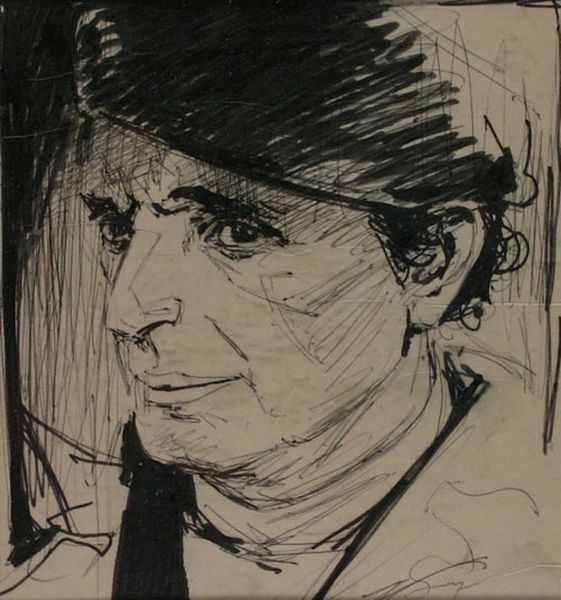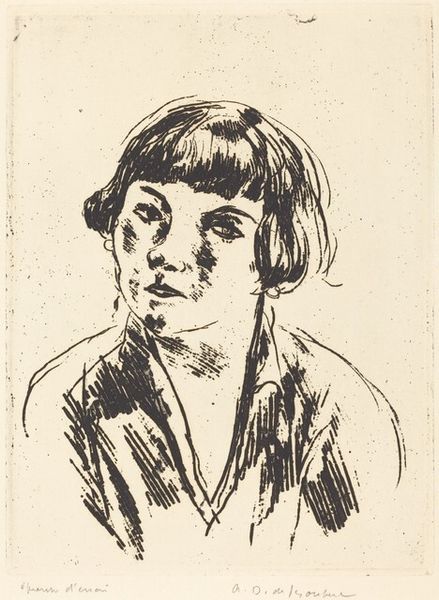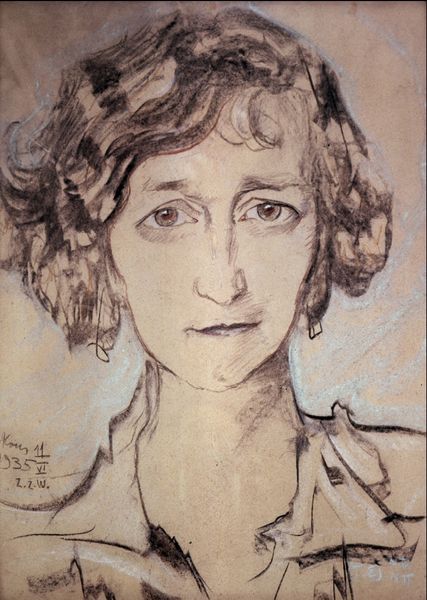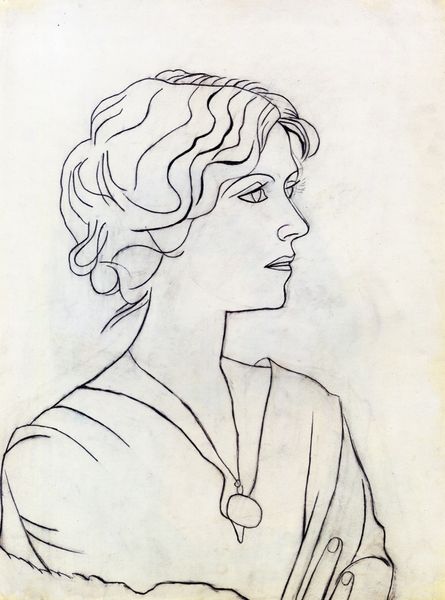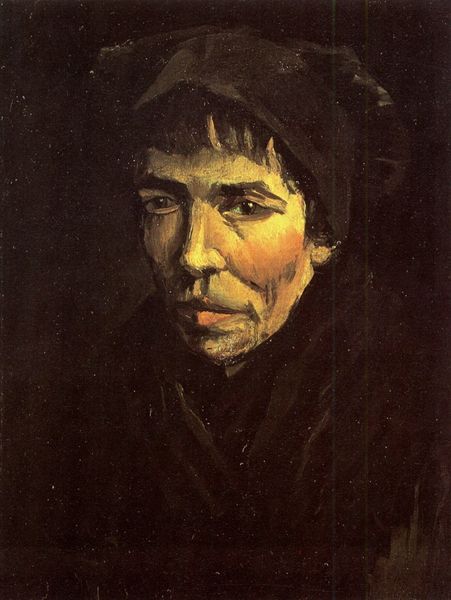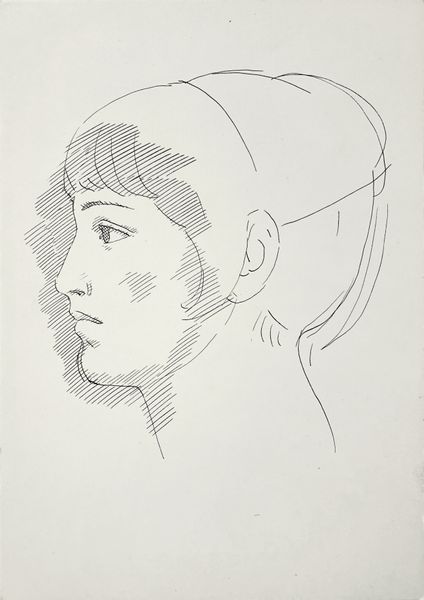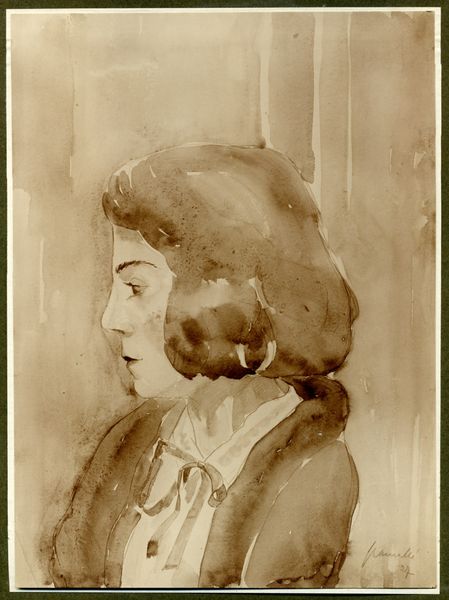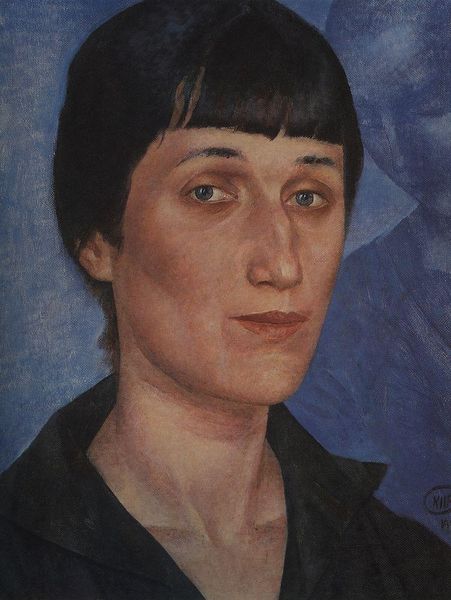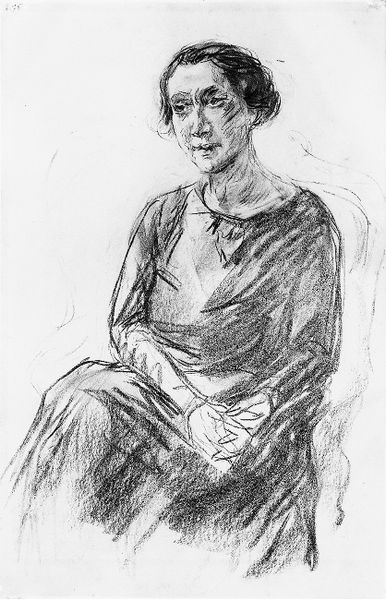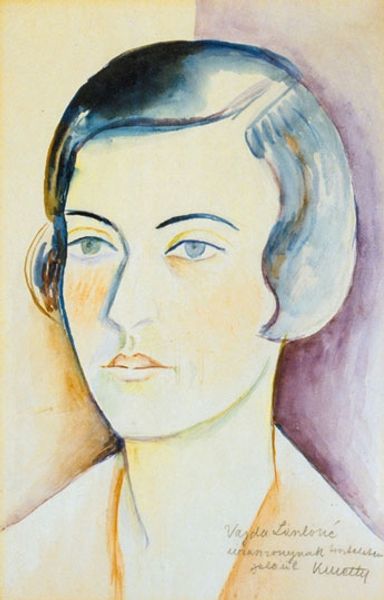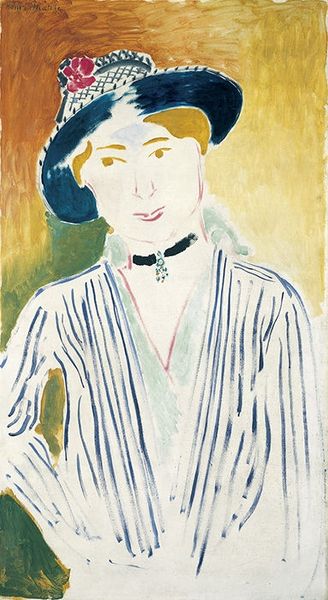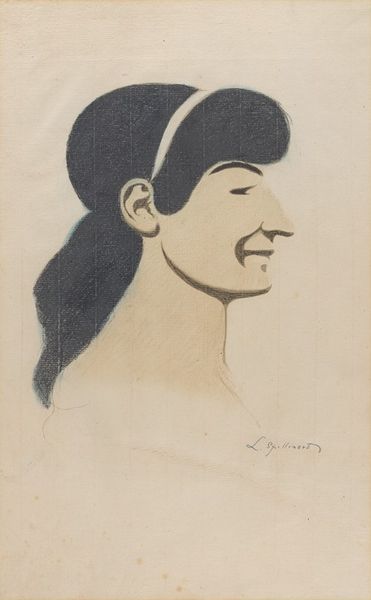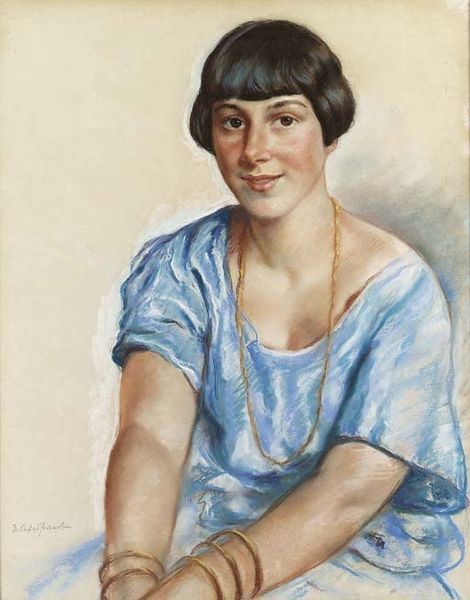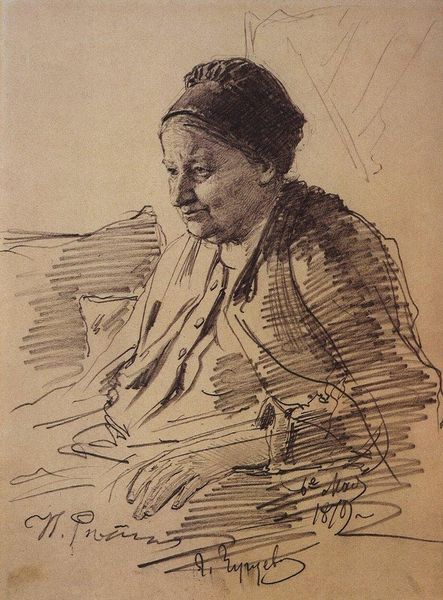
drawing, ink, graphite, pen
#
portrait
#
drawing
#
caricature
#
figuration
#
ink
#
famous-people
#
sketch
#
expressionism
#
line
#
graphite
#
russian-avant-garde
#
pen
#
portrait drawing
#
portrait art
#
modernism
#
realism
Copyright: Public domain US
Editor: So, here we have Jury Annenkov’s 1921 portrait of Anna Akhmatova rendered in ink and graphite. It’s striking how austere the portrait feels, yet there's also something deeply human in her gaze. What can you tell me about it? Curator: This work is fascinating in the context of the Russian avant-garde and the shifting roles of artists in the post-revolutionary Soviet Union. Annenkov was a versatile artist, but consider how the politicized cultural climate of the time might have impacted the representation of a prominent figure like Akhmatova. Does this portrait glorify her, or does it serve another purpose? Editor: It's not overtly glorifying, but it does seem to capture a certain strength. The lines are so defined. What’s the significance of portraying her in such a stark way? Curator: Annenkov could be intentionally navigating the expectations of socialist realism, the dominant artistic style being promoted. By using sharp, almost caricatured lines, do you think he is distancing himself from sentimental portrayals or making a social commentary? Remember, Akhmatova's poetry was often viewed with suspicion by the Soviet authorities. Editor: That's a great point. Maybe the starkness is a form of resistance or a way to subtly critique the control over artistic expression. So, this piece can be interpreted as reflecting the tension between artistic freedom and political pressure. Curator: Precisely. Think about how museums and galleries were evolving then. They became platforms for promoting particular ideological viewpoints. So how does a portrait like this exist within that system? Is it challenging or complicit? Editor: Wow, I didn’t consider it in relation to those sociopolitical elements. It adds layers of depth that change the meaning significantly. Thanks! Curator: Indeed, seeing art through a socio-political lens transforms how we interpret the artist’s choices and intentions.
Comments
No comments
Be the first to comment and join the conversation on the ultimate creative platform.
